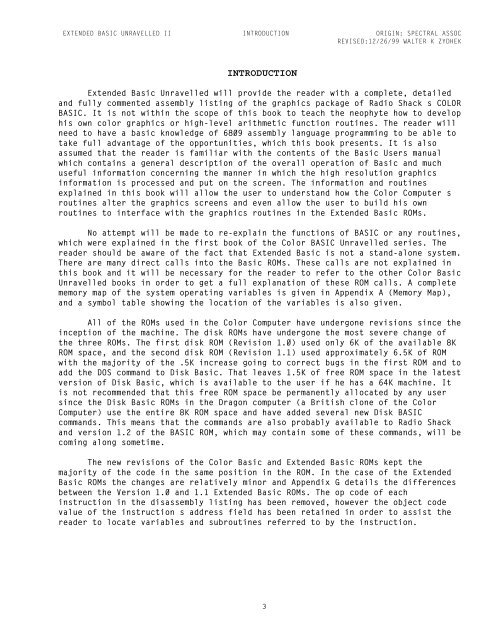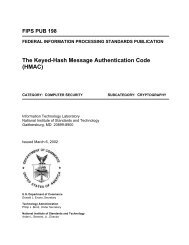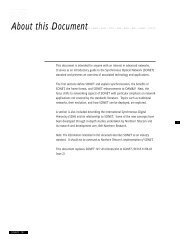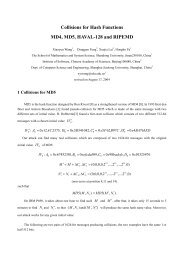Uncompressed - The Tech Heap
Uncompressed - The Tech Heap
Uncompressed - The Tech Heap
- No tags were found...
Create successful ePaper yourself
Turn your PDF publications into a flip-book with our unique Google optimized e-Paper software.
EXTENDED BASIC UNRAVELLED II INTRODUCTION ORIGIN: SPECTRAL ASSOCREVISED:12/26/99 WALTER K ZYDHEKINTRODUCTIONExtended Basic Unravelled will provide the reader with a complete, detailedand fully commented assembly listing of the graphics package of Radio Shack’s COLORBASIC. It is not within the scope of this book to teach the neophyte how to develophis own color graphics or high-level arithmetic function routines. <strong>The</strong> reader willneed to have a basic knowledge of 6809 assembly language programming to be able totake full advantage of the opportunities, which this book presents. It is alsoassumed that the reader is familiar with the contents of the Basic Users manualwhich contains a general description of the overall operation of Basic and muchuseful information concerning the manner in which the high resolution graphicsinformation is processed and put on the screen. <strong>The</strong> information and routinesexplained in this book will allow the user to understand how the Color Computer’sroutines alter the graphics screens and even allow the user to build his ownroutines to interface with the graphics routines in the Extended Basic ROMs.No attempt will be made to re-explain the functions of BASIC or any routines,which were explained in the first book of the Color BASIC Unravelled series. <strong>The</strong>reader should be aware of the fact that Extended Basic is not a stand-alone system.<strong>The</strong>re are many direct calls into the Basic ROMs. <strong>The</strong>se calls are not explained inthis book and it will be necessary for the reader to refer to the other Color BasicUnravelled books in order to get a full explanation of these ROM calls. A completememory map of the system operating variables is given in Appendix A (Memory Map),and a symbol table showing the location of the variables is also given.All of the ROMs used in the Color Computer have undergone revisions since theinception of the machine. <strong>The</strong> disk ROMs have undergone the most severe change ofthe three ROMs. <strong>The</strong> first disk ROM (Revision 1.0) used only 6K of the available 8KROM space, and the second disk ROM (Revision 1.1) used approximately 6.5K of ROMwith the majority of the .5K increase going to correct bugs in the first ROM and toadd the DOS command to Disk Basic. That leaves 1.5K of free ROM space in the latestversion of Disk Basic, which is available to the user if he has a 64K machine. Itis not recommended that this free ROM space be permanently allocated by any usersince the Disk Basic ROMs in the Dragon computer (a British clone of the ColorComputer) use the entire 8K ROM space and have added several new Disk BASICcommands. This means that the commands are also probably available to Radio Shackand version 1.2 of the BASIC ROM, which may contain some of these commands, will becoming along sometime.<strong>The</strong> new revisions of the Color Basic and Extended Basic ROMs kept themajority of the code in the same position in the ROM. In the case of the ExtendedBasic ROMs the changes are relatively minor and Appendix G details the differencesbetween the Version 1.0 and 1.1 Extended Basic ROMs. <strong>The</strong> op code of eachinstruction in the disassembly listing has been removed, however the object codevalue of the instruction’s address field has been retained in order to assist thereader to locate variables and subroutines referred to by the instruction.3






